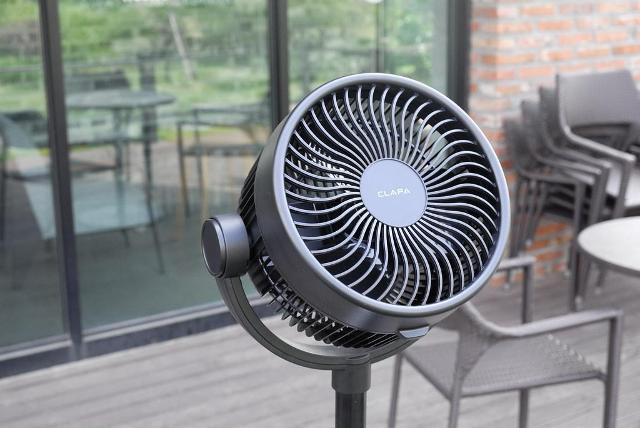
Did you know that the human body can lose up to 1.5 quarts of sweat per hour during extreme heat? This staggering fact highlights just how much our bodies work to maintain a safe internal temperature when the mercury rises. Yet, staying cool isn’t just about battling sweat; it’s about employing smart, creative strategies that protect your well-being and keep discomfort at bay without relying solely on air conditioning. Here are some inventive approaches to help you stay refreshingly cool during a heatwave.
Harnessing the Power of Water Beyond the Shower
Water is the most straightforward way to cool down, but its potential extends far beyond a quick rinse. Consider these techniques:
-
DIY Cooling Towels: Soak a lightweight cotton or microfiber towel in cold water, wring it out, and place it around your neck or forehead. As the water evaporates, it pulls heat away from your skin, providing a natural cooling effect. For added longevity, freeze the towel for 15-20 minutes before use.
-
Foot Baths: Immersing your feet in a basin of cold water can rapidly reduce body temperature. This works because the feet have numerous blood vessels close to the surface, allowing heat to dissipate quickly. Add a few drops of peppermint essential oil or a handful of ice cubes to enhance the refreshing sensation.
-
Indoor Water Features: Small fountains or misting devices can increase humidity in dry environments, making the air feel cooler and more comfortable. A desktop water fountain, for instance, not only adds aesthetic appeal but also promotes cooling through evaporation.
Innovative Clothing Choices and Fabrics
The clothes you wear can significantly influence your comfort during high temperatures. Moving beyond standard cotton tees, explore these options:
-
Cooling Fabrics: Modern textiles like bamboo, linen, and specially engineered moisture-wicking materials draw sweat away from the body and dry quickly, creating a cooling effect. Brands now offer clothing with embedded cooling technology, such as phase-change materials that absorb and release heat.
-
Loose and Light-Colored Garments: Loose-fitting clothes allow air to circulate around your skin, while light colors reflect sunlight rather than absorbing it. Combining these factors reduces heat retention dramatically.
-
Wet Clothing Trick: A little counterintuitive but effective—wearing a damp shirt can amplify evaporative cooling. Just ensure it’s breathable fabric and you avoid prolonged exposure to direct sun to prevent discomfort.
Rethinking Your Environment: Creative Cooling at Home and Work
Adjusting your surroundings can transform the heat challenge into an opportunity for innovation:
-
Cross-Ventilation and Strategic Fans: Positioning fans to create a cross-breeze can be surprisingly effective. Place one fan near a window facing outward to push hot air out, and another on the opposite side of the room pulling cooler air in. For an extra chill, set a shallow pan filled with ice cubes in front of the fan; the breeze will carry cool mist around the room.
-
Window Treatments: Reflective window films or blackout curtains can block out solar heat gain. Another clever method is to hang damp sheets in front of open windows; as the breeze passes through, it cools the incoming air. This technique has roots in traditional cooling methods used in arid climates.
-
Create a Cool Zone: Designate a specific room in your home as a “cool zone” by minimizing heat-generating electronics and using portable coolers or evaporative coolers. This space becomes a refuge during peak heat hours.
Food and Beverage as Natural Coolants
What you consume can either raise or lower your internal temperature.
-
Hydrate with Purpose: Beyond plain water, consuming water-rich fruits and vegetables like watermelon, cucumber, and strawberries helps maintain hydration while providing essential vitamins and minerals. Herbal iced teas with cooling herbs like mint or lemongrass are refreshing alternatives to sugary drinks.
-
Cold Meals: Opt for cold dishes such as salads, gazpacho, or sushi. These require less metabolic energy to digest, which means your body produces less internal heat.
-
Avoid Heavy and Spicy Foods: Heavy proteins and spicy ingredients increase metabolic heat production, making you feel warmer. Light, easily digestible meals support staying cool from the inside out.
Mindful Scheduling and Activities
Adjusting your daily routines can mitigate heat exposure effectively.
-
Shift Your Exercise: Engage in physical activity during cooler parts of the day, such as early morning or late evening. Consider indoor workouts in shaded areas with fans or cooling towels.
-
Power Down Electronics: Devices like computers, televisions, and lamps generate heat. Turning them off when not in use helps reduce ambient temperature.
-
Practice Relaxation Techniques: Stress can elevate body temperature. Techniques like deep breathing, meditation, or gentle yoga can promote relaxation and help regulate body heat.
Leveraging Technology and Gadgets
Modern technology offers various tools designed to combat heat creatively.
-
Wearable Fans and Coolers: Battery-operated personal fans, neck fans, or cooling scarves provide portable relief and are especially useful outdoors.
-
Smart Thermostats and Sensors: These devices optimize cooling by adjusting temperatures based on occupancy and time of day, improving energy efficiency while maintaining comfort.
-
Cooling Gel Pads and Mattresses: Using cooling gel-infused pads or breathable mattress toppers can improve sleep quality during hot nights by dissipating heat away from the body.
Keeping cool during a heatwave requires a blend of creativity, awareness, and practical strategies. From harnessing water in inventive ways and wearing the right fabrics to adjusting your environment and daily habits, these approaches empower you to beat the heat thoughtfully and sustainably. Incorporating a few of these techniques can not only improve comfort but also reduce reliance on energy-intensive cooling systems, offering benefits for both your health and the environment.

